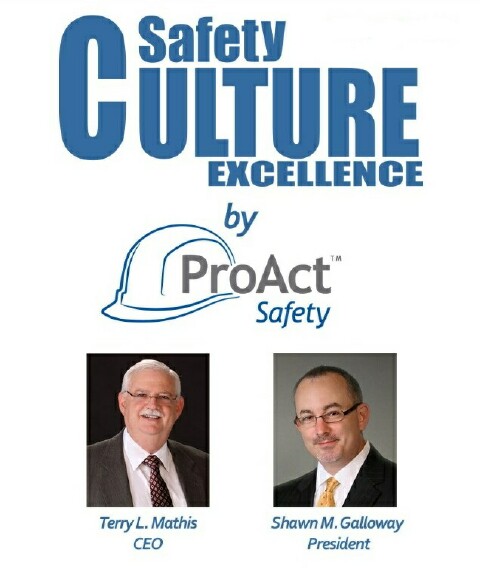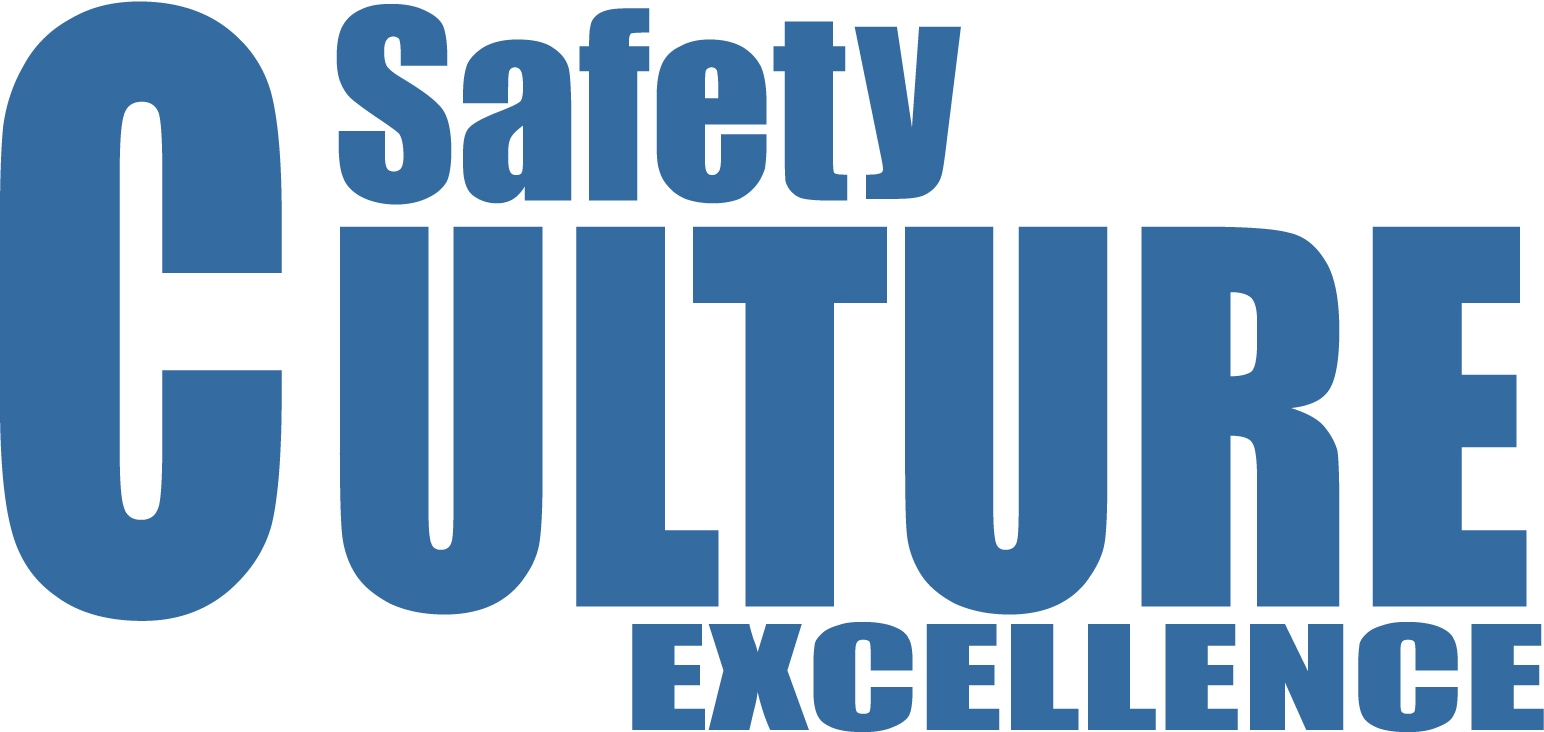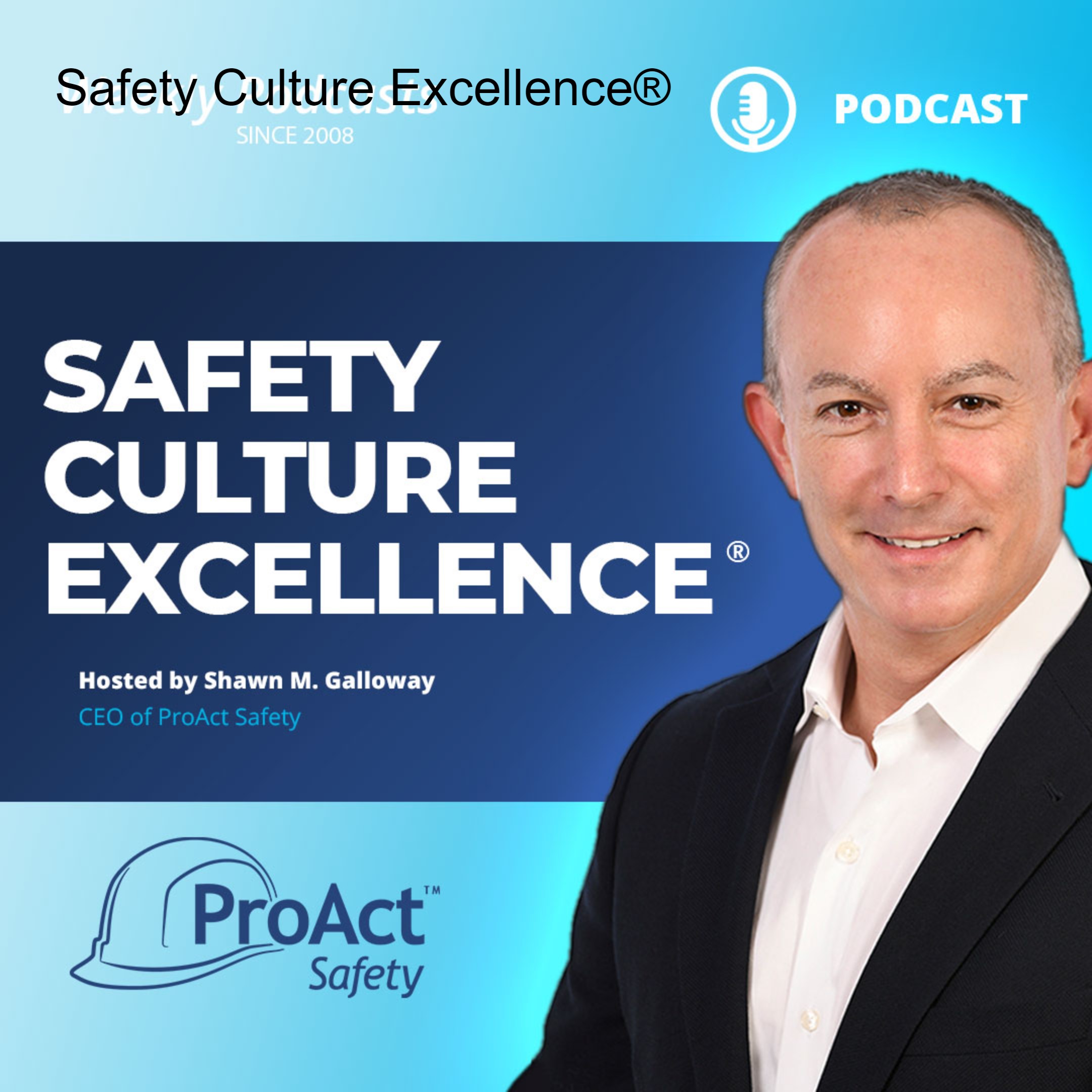Episodes

Wednesday Apr 16, 2014
The Confrontation Calamity
Wednesday Apr 16, 2014
Wednesday Apr 16, 2014
The emphasis on the concept of confrontation in safety is epidemic. Consultants, books and articles taut the virtue of teaching workers to confront each other over safety issues. They claim that the willingness and ability to confront may be the key competency of safety. They argue that it must become unacceptable to see a risk being taken and not confront the individual taking the risk.
The basis of this misguided concept goes back to two core misconceptions of safety thinking, (i.e. the idea that the goal of safety is to fail less and that all risk-taking is a matter of worker choice). When one worker sees another being bad there must be a confrontation to make the worker less bad. The worker taking a risk simply made a bad choice and confrontation will result in less-bad decisions in the future. The truth is that safety excellence is about achieving success, not simply avoiding failure and that there are organizational influences that impact workers’ decisions that need to be discovered and addressed if lasting change is to be made.
The alternative to the concept of confrontation is the concept of coaching. Coaching is a way to achieve success rather than simply avoid failure. It involves workers building on each other’s strengths rather than simply trying to correct their weaknesses. It is built upon a vision of success in which everyone helps each other reach a goal. It necessitates a vision of success and helps to identify organizational influences on workers’ behavioral choices.
Confrontation weakens relationships and culture and seldom results in lasting change. Coaching builds relationships and culture and almost always results in improved performance. Workers listen to their allies differently than they listen to their critics. Confrontation creates either enmity within the safety culture or avoidance behavior that has the appearance of confrontation without the reality. Either damages the very fabric of what it is supposed to improve.
-Terry L. Mathis
Terry L. Mathis is the founder and CEO of ProAct Safety, an international safety and performance excellence firm. He is known for his dynamic presentations in the fields of behavioral and cultural safety, leadership, and operational performance, and is a regular speaker at ASSE, NSC, and numerous company and industry conferences. EHS Today listed Terry as a Safety Guru in ‘The 50 People Who Most Influenced EHS in 2010, 2011 and 2012-2013. He has been a frequent contributor to industry magazines for over 15 years and is the coauthor of STEPS to Safety Culture Excellence, 2013, WILEY.

Monday Apr 14, 2014
337 – To Delegate or Not to Delegate Safety?
Monday Apr 14, 2014
Monday Apr 14, 2014
Greetings everyone, this podcast recorded while in Bangkok, Thailand. I’d like to share an article I wrote that was published April 2014 in OH&S Magazine. The published article can either be found on the magazine’s website or under Insights at www.ProActSafety.com.
I hope you enjoy the podcast this week. If you would like to download or play on demand our other podcasts, please visit the ProAct Safety’s podcast website at: http://www.safetycultureexcellence.com. If you would like access to archived podcasts (older than 90 days – dating back to January 2008) please visit www.ProActSafety.com/Store. For more detailed strategies to achieve and sustain excellence in performance and culture, pick up a copy of our book, STEPS to Safety Culture Excellence - http://proactsafety.com/insights/steps-to-safety-culture-excellence
Have a great week!
Shawn M. Galloway
ProAct Safety

Wednesday Apr 09, 2014
The Lost Art of Listening
Wednesday Apr 09, 2014
Wednesday Apr 09, 2014
The late Stephen Covey said that one of the habits of highly-effective people is to “Seek First to Understand, Then to Be Understood.” Most safety programs do exactly the opposite and are therefore not highly effective. Leaders and safety professionals decide what is needed and deploy new programs and processes without consulting the very people who know the issues in the field, and will ultimately determine the success or failure of new initiatives. Organizations regularly hire consultants to analyze their problems and the consultants get the information to do so directly from the organization’s employees. A good consultant is a good listener first and a good problem solver second.
But listening is more than just hearing sounds. It begins with setting the right tone for the conversation. There must be a non-threatening and respectful atmosphere in which the listening can take place. There also needs to be an honest and frank expectation of how the information will potentially be used. Skepticism often arises from past interviews or surveys from which no action has been taken. Enough of this kind of skepticism can render the conversation useless.
Sometimes, the right questions need to be asked to spark the right discussions and discover the underlying issues. When issues emerge from the discussions, they need to be probed and understood more fully. That means that the right questions need the right follow-up questions as well. The whole process can build upon itself once those interviewed realize that their input is being valued and can potentially lead to improvements. Listening is ultimately empowering people by taking them seriously.
-Terry L. Mathis
Terry L. Mathis is the founder and CEO of ProAct Safety, an international safety and performance excellence firm. He is known for his dynamic presentations in the fields of behavioral and cultural safety, leadership, and operational performance, and is a regular speaker at ASSE, NSC, and numerous company and industry conferences. EHS Today listed Terry as a Safety Guru in ‘The 50 People Who Most Influenced EHS in 2010, 2011 and 2012-2013. He has been a frequent contributor to industry magazines for over 15 years and is the coauthor of STEPS to Safety Culture Excellence, 2013, WILEY.

Monday Apr 07, 2014
336 – Giving Safety a Brand Identity
Monday Apr 07, 2014
Monday Apr 07, 2014
Greetings everyone, this podcast recorded while in Bangkok, Thailand. I’d like to share an article Terry Mathis wrote that was published March 2014 in EHS Today Magazine. The published article can either be found on the magazine’s website or under Insights at www.ProActSafety.com.
I hope you enjoy the podcast this week. If you would like to download or play on demand our other podcasts, please visit the ProAct Safety’s podcast website at: http://www.safetycultureexcellence.com. If you would like access to archived podcasts (older than 90 days – dating back to January 2008) please visit www.ProActSafety.com/Store. For more detailed strategies to achieve and sustain excellence in performance and culture, pick up a copy of our book, STEPS to Safety Culture Excellence - http://proactsafety.com/insights/steps-to-safety-culture-excellence
Have a great week!
Shawn M. Galloway
ProAct Safety

Thursday Apr 03, 2014
Safety as a Split Job-Title
Thursday Apr 03, 2014
Thursday Apr 03, 2014
Many organizations, especially smaller sites, are making safety part of someone’s job title. It may be HR/Safety, Plant Engineer/Safety, Environmental/Safety, Health/Safety or some other combination. I seldom see “safety” listed first on such combined titles. Is that intentional or do the words just sound better in that order? In the majority of cases, it is the safety responsibility that is the “add-on” and the person assigned is another kind of professional and a part-time advocate of safety.
Having even a part-time safety point person can be better than having none; but there is a definite downside to this arrangement as well. It can send the message that safety is not important enough to dedicate a professional to it. It can also suggest that safety is not all that complex and a little attention is all that is needed. Not everyone takes these kinds of inferences from such an arrangement, but it often happens.
The most common problem with such assignments is that safety is seriously subjugated to the other job because that is where the expertise and interest lies. Safety is more or less a hobby that gets whatever extra time is available. Communications from the safety person are less than expert and less than official.
If your organization has such dual functions, carefully define the division of responsibilities, provide professional development for the safety function, calendar the first year’s safety activities and follow-up to see that they are accomplished, and periodically ask the personnel at the site how the safety function is going and how it could be improved. Today’s economic reality calls on many individuals to wear multiple hats. Just be sure one hat, doesn’t wind up in the closet.
-Terry L. Mathis
Terry L. Mathis is the founder and CEO of ProAct Safety, an international safety and performance excellence firm. He is known for his dynamic presentations in the fields of behavioral and cultural safety, leadership, and operational performance, and is a regular speaker at ASSE, NSC, and numerous company and industry conferences. EHS Today listed Terry as a Safety Guru in ‘The 50 People Who Most Influenced EHS in 2010, 2011 and 2012-2013. He has been a frequent contributor to industry magazines for over 15 years and is the coauthor of STEPS to Safety Culture Excellence, 2013, WILEY.

Wednesday Mar 26, 2014
Can-Do Safety Cultures
Wednesday Mar 26, 2014
Wednesday Mar 26, 2014
It is important to define the desired capabilities of a culture instead of simply the desired characteristics. What a culture “can do” is much more crucial than what it “is like.” That said, some cultures become can-do cultures without internalizing safety as a part of what they can do. Such cultures become “get it done at all costs” cultures. The members of the culture become willing to give their bodies up for the team. They put job completion ahead of all other priorities.
The history of a site can be a major influence in developing such a culture. Sites that have experienced multiple downsizing or threats of closing tend to develop work groups that perform for survival. The constant threat of being laid off or having your workplace closed tends to outweigh the threat of personal injury. If managers and supervisors constantly use these threats to motivate or hurry workers, the perception that production trumps safety is constantly reinforced.
When companies downsize, reorganize or otherwise disrupt site cultures, they should anticipate and manage the safety aspects of the change. Survival is an economic necessity, but poor safety can impact a site’s viability as much as ineffective or incomplete work. Survival mode should include both surviving the economic challenges and the safety issues. Again, it is not a dichotomy between production and safety, but addressing the need for safe production.
-Terry L. Mathis
Terry L. Mathis is the founder and CEO of ProAct Safety, an international safety and performance excellence firm. He is known for his dynamic presentations in the fields of behavioral and cultural safety, leadership, and operational performance, and is a regular speaker at ASSE, NSC, and numerous company and industry conferences. EHS Today listed Terry as a Safety Guru in ‘The 50 People Who Most Influenced EHS in 2010, 2011 and 2012-2013. He has been a frequent contributor to industry magazines for over 15 years and is the coauthor of STEPS to Safety Culture Excellence, 2013, WILEY.

Monday Mar 10, 2014
332 - Shaping the Safety Culture of Project-Based Workforces
Monday Mar 10, 2014
Monday Mar 10, 2014
Greetings everyone, this podcast recorded while in Morgan City, LA. I’d like to share an article Terry L. Mathis wrote that was published February 2014 in EHS Today Magazine. The published article can either be found on the magazine’s website or under Insights at www.ProActSafety.com.
I hope you enjoy the podcast this week. If you would like to download or play on demand our other podcasts, please visit the ProAct Safety’s podcast website at: http://www.safetycultureexcellence.com. If you would like access to archived podcasts (older than 90 days – dating back to January 2008) please visit www.ProActSafety.com/Store. For more detailed strategies to achieve and sustain excellence in performance and culture, pick up a copy of our book, STEPS to Safety Culture Excellence - http://proactsafety.com/insights/steps-to-safety-culture-excellence
Have a great week!
Shawn M. Galloway
ProAct Safety

Monday Mar 03, 2014
331 - Profound Knowledge: What Drives Your Safety Strategy
Monday Mar 03, 2014
Monday Mar 03, 2014
Greetings everyone, this podcast recorded while in Gonzales, LA. I’d like to share an article I wrote that was published February 2014 in OH&S Magazine. The published article can either be found on the magazine’s website or under Insights at www.ProActSafety.com.
I hope you enjoy the podcast this week. If you would like to download or play on demand our other podcasts, please visit the ProAct Safety’s podcast website at: http://www.safetycultureexcellence.com. If you would like access to archived podcasts (older than 90 days – dating back to January 2008) please visit www.ProActSafety.com/Store. For more detailed strategies to achieve and sustain excellence in performance and culture, pick up a copy of our book, STEPS to Safety Culture Excellence - http://proactsafety.com/insights/steps-to-safety-culture-excellence
Have a great week!
Shawn M. Galloway
ProAct Safety

Wednesday Feb 26, 2014
Improving Safety: Programs vs. People
Wednesday Feb 26, 2014
Wednesday Feb 26, 2014
The last several times I have asked clients what they are doing to make workers safer, they answered with a list of safety programs. There is an underlying assumption that programs can shape people. While training, meetings, onboarding and communication are definitely influences on behavioral choices, they are far from the only ones.
I have witnessed situations in which such programs were doing mortal battle with the workplace, the culture, production pressure and other powerful daily factors which influenced workers to take risks. The poor programs were outnumbered and overpowered. These other influences were not being addressed in the safety efforts except through trying to strengthen the programs.
The recent emphasis and popularity of focusing on safety “culture” is, in part, an admission that people-to-people influences are important and must be addressed. However, most organizations attempt to improve the safety culture by using what? MORE PROGRAMS! Again, this assumption that programs shape people and even the way people shape each other.
Many organizations are attempting to program the seeds of culture while ignoring the climate and chemistry in which they want the seeds to grow. Exactly the opposite approach is what most often brings success. People respond to the environment in which they work which includes physical design, leadership, supervision style, respect for lifestyle issues, and being treated like an adult.
For a brief moment, forget what your programs should be and focus on what your people should be. What influences will make them feel good about becoming such a person and how can you create these influences in your organization?
-Terry L. Mathis
Terry L. Mathis is the founder and CEO of ProAct Safety, an international safety and performance excellence firm. He is known for his dynamic presentations in the fields of behavioral and cultural safety, leadership, and operational performance, and is a regular speaker at ASSE, NSC, and numerous company and industry conferences. EHS Today listed Terry as a Safety Guru in ‘The 50 People Who Most Influenced EHS in 2010, 2011 and 2012-2013. He has been a frequent contributor to industry magazines for over 15 years and is the coauthor of STEPS to Safety Culture Excellence, 2013, WILEY.

Wednesday Feb 19, 2014
Safety: Finding the Right Mix of Idealism and Realism
Wednesday Feb 19, 2014
Wednesday Feb 19, 2014
Are all accidents preventable? The idealist says that, under the right circumstances and with early detection of risks and trends, they are. The realist says that given probability, massive exposure to risks, human nature and imperfect performance a certain number of accidents are inevitable. Which view is right and which is wrong?
A pure idealist’s mentality implies that any rate of failure is unacceptable. A pure realist’s mentality implies that it is ok to hurt workers since it is unavoidable. Either of these extremes tends to produce philosophically flawed and, thus, ineffective safety programs.
The most effective safety effort is neither blind to the magnitude of the challenge nor resigned to accept some level of failure. Likewise, the most effective safety effort is always intelligently adapting but never knee-jerk reacting. Where the idealist would fail to adapt and the realist overreact, the effective safety professional continuously analyzes and improves the approach, always looking for the next better way to improve safety. It is possible to dream the impossible dream without tilting with windmills.
-Terry L. Mathis
Terry L. Mathis is the founder and CEO of ProAct Safety, an international safety and performance excellence firm. He is known for his dynamic presentations in the fields of behavioral and cultural safety, leadership, and operational performance, and is a regular speaker at ASSE, NSC, and numerous company and industry conferences. EHS Today listed Terry as a Safety Guru in ‘The 50 People Who Most Influenced EHS in 2010, 2011 and 2012-2013. He has been a frequent contributor to industry magazines for over 15 years and is the coauthor of STEPS to Safety Culture Excellence, 2013, WILEY.

